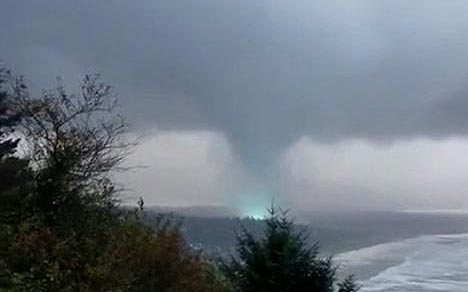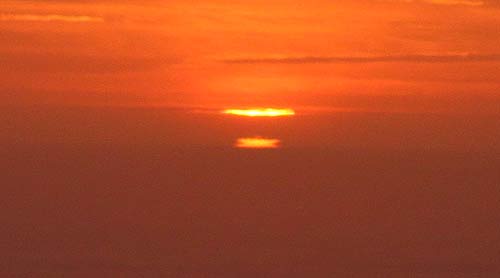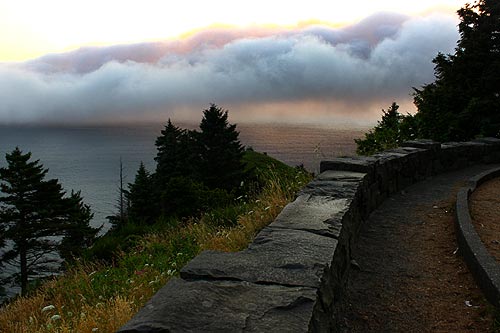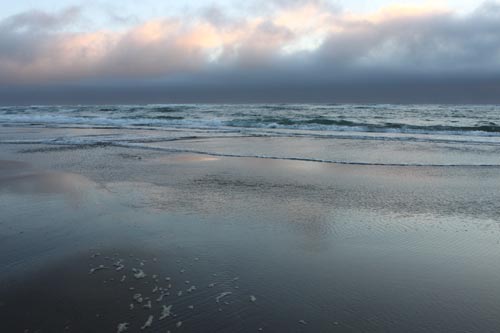Four Unusual Oregon Coast Weather Phenomena
Published 03/18/2020 at 4:44 AM PDT
By Oregon Coast Beach Connection staff

Includes exclusive listings; some specials in winter
In Cannon Beach:
Includes rentals not listed anywhere else
In Manzanita, Wheeler, Rockaway Beach:
Some specials for winter
In Pacific City, Oceanside:
Some specials for winter
In Lincoln City:
Some specials for winter
In Depoe Bay, Gleneden Beach:
Some specials for winter
In Newport:
Look for some specials
In Waldport
Some specials for winter
In Yachats, Florence
Some specials for winter
(Oregon Coast) – Most of the time the big surprises of Oregon’s coastline come from what’s beneath your feet: weird creatures that wash up, kooky things emerging after winter storms, etc. Or maybe it’s in the cliff walls or headlands. Have you ever noticed the truly remarkable and odd above you?
The Pacific Ocean has its share of trippy wonders that sometimes can be seen on land and plenty that can’t. But that’s another story. Here are four quite extraordinary facets of beach weather you probably know little to nothing about.
Waterspout. Perhaps the most unwelcome of odd weather sights along the Oregon coast, it is thankfully quite rare. They are considered a water spout until they make landfall – then it’s a tornado. Such a monster rumbled from the sea into Lincoln City back in 2010 and tore up the Sea Horse Motel. Another ripped into Manzanita a few years ago and ripped out a third of the town’s trees.
Mostly, however, they luckily stay offshore.

Photo of tornado at Manzanita causing a transformer to explode: courtesy Tyler Ryals).
These, according to NOAA, come in two flavors: tornadic and fair weather. Fair weather water spouts are created by small amounts of winds and they don’t move very much before dissipating. Both come from spinning columns of air.
“They are associated with severe thunderstorms and are often accompanied by high winds and seas, large hail, and dangerous lightning,” NOAA said. “The tornadic variety are more dangerous than fair weather waterspouts, which generally are not associated with thunderstorms, and usually form along the dark flat base of a line of developing cumulus clouds.” See a trippy video of a mini water spout on the Oregon coast

Green Flash and the Novaya Zemlya. The green flash at sunset is much more well known, but it has a freaky cousin called the Novaya Zemlya effect that is considered fairly rare. Both come from more or less the same thing: refraction of light. And the Novaya can actually contain a green flash at times.
The green flash is where you see a green shade take over the last part of the sunset for a few seconds – as many as ten or so. “Flash” is a bit of a misnomer. It usually covers the edges or the bulk of the disk, or sometimes turning the whole thing a weird shade of green.
While the Novaya is apparently a rarity in the rest of the world, it seems to pop maybe as much as once a month on the Oregon coast. It’s hard to find confirmation on this. What you see here is a sort of double-headed or triple sunset, with one or more images of the sun projected above it. It’s a strange, mirage effect, really. This can also bring a small green flash near the very end. See the Novaya Zemlya / Green Flash story for more.

Fog Tsunami – or Beach Haboob. According to NOAA, what you might see is something that looks like a giant tsunami offshore. In some cases, if sunset hits it as in this picture above at Manzanita, it looks like a massive haboob sitting offshore (haboob is a giant dust storm, sometimes seen in U.S. deserts). An actual fog tsunami covers the ocean, whereas here you see a space between fog layer and sea (the photo below is more like a fog tsunami).

“When conditions are just right in late spring or early summer, the condensation from warm air merging with cool ocean water can create this dramatic effect,” NOAA said.
It’s not uncommon to see other weather layers lying offshore on this coastline, sometimes many miles out but still blocking the sun. The illusion of a giant fog tsunami seems more common in other ocean areas than this coastline, however.

Crazed Flying Foam. Usually this happens in winter and spring, so the possibilities of catching sight of this are not over until maybe May.
The sudsy stuff from the ocean can become downright freaky, becoming like snowbanks that go flying across the highway at times. Strong winds and stormy conditions inject air into all the foam that already exists and stirs it up into a foamy mass.
Don’t worry, first of all: sea foam is actually a sign of a healthy ocean, and it’s clean. It’s simply made up of air, ocean water and lots of deceased phytoplantkon, though it can smell a bit and stain your clothes.
In recent years, Oregon Department of Fish and Wildlife (ODFW) addressed this during one significant event.
“The air bubbles in the presence of dissolved organic matter is what causes sea foam to form,” ODFW said. “The organic matter is mostly made of dead phytoplankton. The protein from the phytoplankton gives the water enough surface tension to form bubbles.”
One of the more spectacular sightings of this oddity can on rare occasions be seen at Devil’s Churn just south of Yachats. If the wind is blowing it just right, it creates an upwards air column between the steep slope of Cape Perpetua and the foam floats upwards, looking like snow going the wrong direction.
Oregon Coast Hotels in this area - Where to eat - Maps - Virtual Tours
Cannon Beach Lodging
Nehalem Bay Lodgings
Manzanita Hotels, Lodging
Three Capes Lodging
Pacific City Hotels, Lodging
Lincoln City Lodging
Depoe Bay Lodging
Newport Lodging
Waldport Lodging
Yachats Lodging
Oregon Coast Vacation Rentals
Oregon Coast Lodging Specials
More About Oregon Coast hotels, lodging.....
More About Oregon Coast Restaurants, Dining.....
Back to Oregon Coast
Contact Advertise on BeachConnection.net
All Content, unless otherwise attributed, copyright BeachConnection.net Unauthorized use or publication is not permitted















































